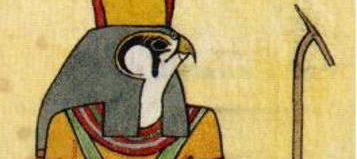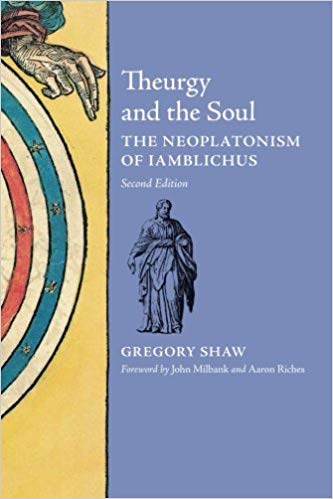Theurgy (θεουργία, literally “divine work”) is best understood as a collaborative effort between human beings and the gods. The word was first used by the Chaldean Oracles in the second century CE and became fully elaborated in the ritual philosophy of the Neoplatonist Iamblichus (died c. 325 CE). Unlike the earlier system of Plotinus, which stressed the importance of contemplation (θεωρία) to attain mystical union (ἕνωσις) with the One, theurgic Neoplatonism also emphasizes ritual. Various ritual techniques serve to purify the vessel (ὑποδοχή) of the theurgist and enable his or her ascent (ἀναγωγή) to the divine source. Theurgic rituals utilize various divine sumbola (σύμβολα: symbols, tokens, passwords) and sunthemata (συνθήματα: tokens, signs, passwords, signatures), which consist of natural materials (stones, plants, incense, etc.), divine names, numerical constructs, and other ritual structures. A gradual process of ritual purification and ascent brings about the realization of the divinity within the individual (what Iamblichus calls “the One of the soul”). One way this can be understood is a shift in an individual’s perspective from the mortal to the divine. Therefore, the supposed body-soul “dualism” of Plato’s Phaedo and Phaedrus can be reconciled with the overall monistic system of the Timaeus (and of Neoplatonism in general). Matter is “connatural” (συμφυής) with Soul, Soul with Intellect, and Intellect with the One. Theurgic ritual is the complementary moment of reversion (ἐπιστροφή) to the demiurgic procession (πρόοδος), understood to be a continuous cyclical movement. By coming to understand the hidden structures of the universe, the theurgist participates (μετέχει) in its ongoing creation.
One of the best introductions to theurgy is Gregory Shaw’s book, Theurgy and the Soul: The Neoplatonism of Iamblichus.
You may also want to read this Introduction to the De Mysteriis of Iamblichus.


1 thought on “What is Theurgy?”
Comments are closed.